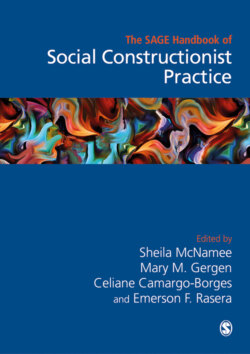Читать книгу The Sage Handbook of Social Constructionist Practice - Группа авторов - Страница 15
На сайте Литреса книга снята с продажи.
Liberation from Authority
ОглавлениеPerhaps the chief incitement to innovation resulted from the constructionist challenge to authority. Whether it be philosophical foundations, rational structures, ethical principles, bodies of evidence, the demands of tradition, or divine inspiration, all claims to authority were thrust into question. An enormous literature began to emerge pointing out the socially constructed character of taken-for-granted realities, both in the natural and social sciences. One had reason to ask of any authoritative pronouncement, from whose standpoint, in what context, for what purposes, at what point in culture or time in history, and with what ideological political implications is this given? It wasn't that such claims should thus be dismissed, as indeed all counter-claims were equally without foundations. And for many purposes, one might well wish to sustain existing traditions. However, the removal of any fundamental grounds of legitimacy provided an open door to innovation. If existing traditions of understanding are limiting, oppressive, or contrary to favored values, how else could one proceed? Could one create practices that would realize one's valued goals?
In the social sciences, a pervasive sense of ‘what if …?’ thus became evident. New forms of pedagogy began to emerge, often emphasizing dialogue and collaboration as opposed to mastering the words of authoritative texts. The ideological and political implications of traditional texts were also thrown into question, thus paving the way for more varied, inclusive, and individualized curricula. Perhaps the most radical outcomes of asking ‘what if …?’ emerged in the domain of research methods. Because natural science research had become progressively identified with positivist foundationalism, there had been strong demands for the newly emerging social sciences to adopt positivist methodologies. Such methods were markers of scientific legitimacy. Thus, systematic measurement, statistical tests, and controlled experiments, for example, had become defining criteria of research. However, liberated from positivist foundationalism, imaginations were free to soar. Such wide-ranging creative efforts were often collected under the misleading but useful banner of ‘qualitative research’. One indicator of the magnitude of this growth was the success of Denzin and Lincoln's pivotal volume, The handbook of qualitative research. The book was first published in 1994, but so energetic and innovative were the practices that were inspired, by 2018 the work had gone into its fifth edition.
These adventures in the social sciences were echoed as well across many domains of social practice. In the mental health professions, for example, the authority of diagnostic labeling came under attack, along with the presumption of the therapist or psychiatrist as ‘the knower.’ Why, it was asked, were the understandings and values of the client or patient so frequently dismissed? As feminists added, the power structure of psychiatry leaves female clients in the position of depending on a male authority to know more about their mental lives than they themselves. Similarly, in healthcare, questions were raised about the way doctors were so often deaf to the values and experiences of their patients. In the organizational world, the shortcomings of top-down control became topics of intense discussion. The knowledge of top management could be narrow, and oblivious to the ideas, needs, and values within the organization and the surrounding culture. Such critique opened the way to developing a new range of more collaboratively based practices, the focus of later chapters in this Handbook.
